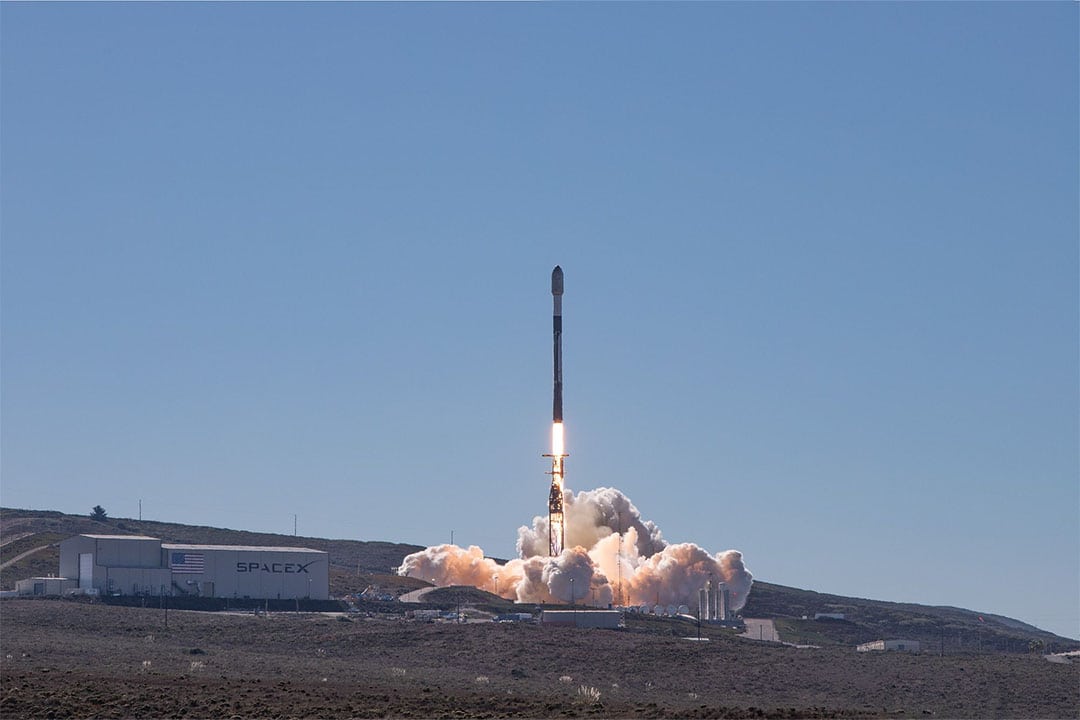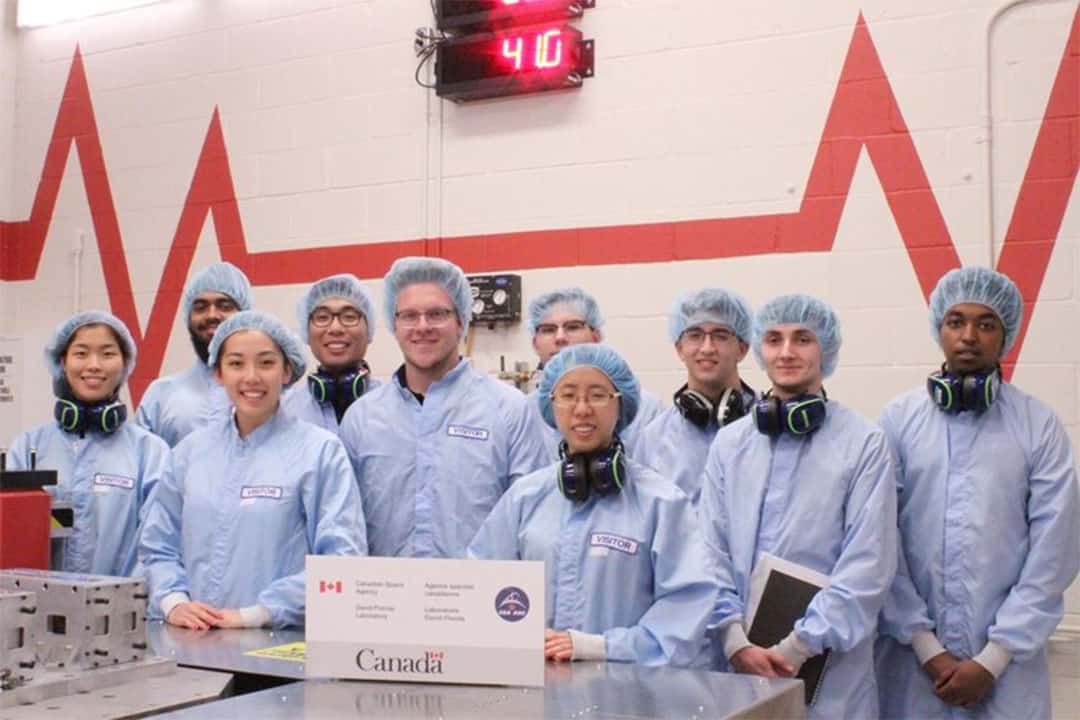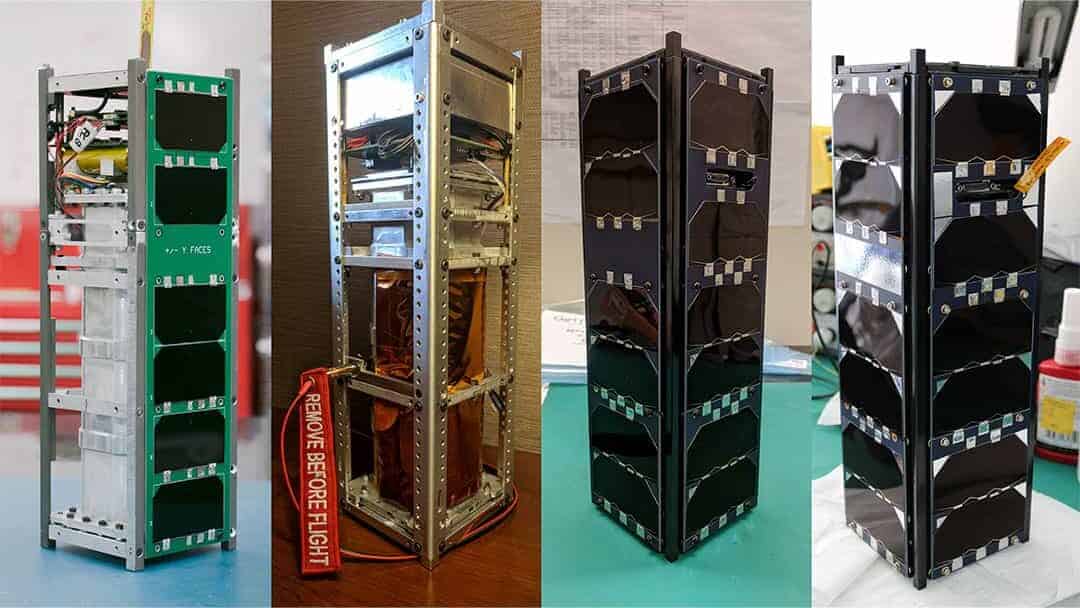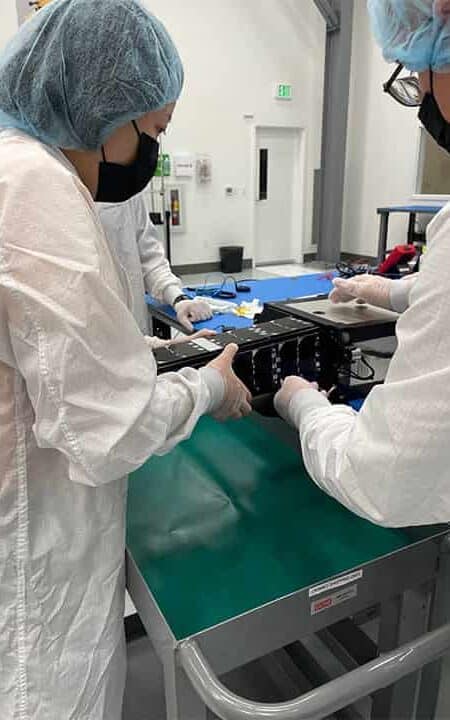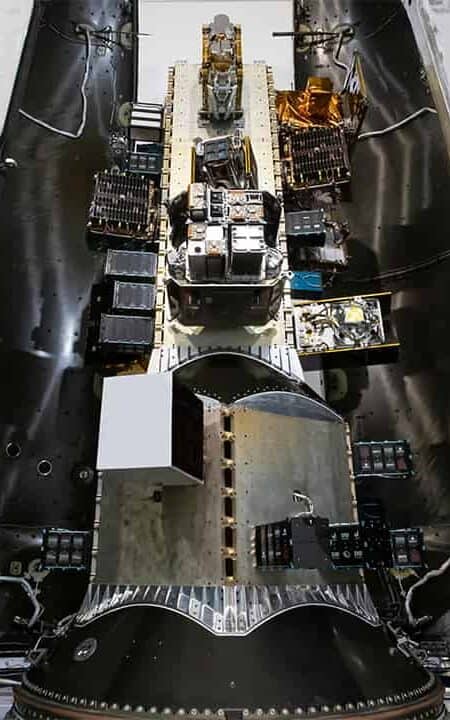On November 11 at 1:49 pm EST, we watched with bated breath as the University of Toronto Aerospace Team (UTAT) Space Systems’ HERON Mk. II satellite lifted off from Vandenberg Space Force Base in California, aboard a Falcon 9 rocket of the SpaceX Transporter-9 mission.
As a rideshare mission to space, the Transporter-9 delivered HERON Mk. II — alongside 89 other small satellites — to an orbit approximately 540 kilometres above Earth’s surface. Marking the culmination of nearly a decade of work by our fellow student Space Systems engineers, the HERON Mk. II’s path to the launch pad was one of dedication and perseverance.
About the team
In brief, we at the UTAT are a team composed primarily of engineering students that designs and builds small satellites known as CubeSats. By small, we mean that they are no larger than a loaf of bread and only weigh a few kilograms!
Formed in 2014 by a group of undergraduate students, our team is open to satellite enthusiasts of all backgrounds, from precocious high schoolers to graduate students eager to share expertise.
For many of us, UTAT Space Systems has become an integral part of university life, seeding many fruitful careers and friendships. Having been active on the team for several years, the two of us can certainly attest to the value it has added to our undergraduate studies. We are both members of the team: Benjamin Nero, the current Mission Manager of HERON Mk. II, and Rosalind Liang, 2022–2023 Director of UTAT Space Systems.
But enough about us. We’re here to tell you about the story of HERON Mk. II.
Where it all began
In the early days, long before we came around, the Space Systems team was small but motivated by a common vision of sending a satellite into space one day. Our team’s first satellite, HERON Mk. I — short for Human Experiment Relay On Nanosatellite — was a CubeSat developed from 2014–2016. The team designed it for the third edition of the Canadian Satellite Design Challenge (CDSC), a competition in which university students across Canada are invited to design, build, and test their own CubeSats.
The main scientific or technological unit on board a satellite is known as its payload. HERON Mk. I housed a payload platform that measures how low Earth orbit (LEO) would affect gene expression and drug resistance of Candida albicans — a potentially harmful yeast strain commonly found in the human gut microbiome. Results of previous studies suggested that C. albicans might display increased resistance to drugs in response to such an environment, which might potentially have negative implications for long-term spaceflight.
For various reasons, the third CDSC did not end in a launch opportunity for the team, and so HERON Mk. I was retired. Armed with valuable lessons, the UTAT soon began work on the second iteration of our spacecraft, HERON Mk. II, for the fourth CSDC running from 2016–2018. At its inception, HERON Mk. II housed the same C. albicans payload as its predecessor.
Getting off the ground
While HERON Mk. I was not destined for launch, we were determined to see a future version of HERON fly in space. However, even though the passion and drive were there, the funding was not. Space missions, even low-cost CubeSats, are prohibitively expensive, and the estimated cost of sending the HERON Mk. II satellite into LEO, accounting for material, testing, and launch costs, would be approximately $400,000.
Eventually, our forerunners at UTAT Space Systems sought to raise funds through a student levy that would charge students $2.77 per semester, which we would have to renew every two years. The levy renewal process was composed of two major stages: a petition and a levy campaign. Ultimately, we passed the levy in the 2017 University of Toronto Students’ Union elections, and UTAT Space Systems succeeded in securing their funding.
While we were one step closer to reaching space, this was only the first of many hurdles we would face in the following years. In the years following the levy campaign and the conclusion of the fourth CSDC, our team was focused on improving the design of HERON Mk. II and getting it ready for space.
In 2018, UTAT Space Systems signed a contract with Spaceflight, a Seattle-based launch services provider that specializes in securing launches for small satellites. In January 2020, our team completed the ‘softstack’ of the spacecraft, which meant doing a dry-run of the final satellite assembly procedure without gluing any of the bolts in place.
Following softstack, our team completed thermal vacuum chamber (TVAC) testing in February 2020 at MDA, a Brampton-based aerospace company, which involved exposing the satellite to vacuum and temperature cycling that mimic space conditions to see if HERON Mk. II could survive the thermal environment of space.
After TVAC testing, our team was preparing for the final “hardstack” assembly of HERON Mk. II, during which the flight model of the spacecraft would be assembled. Then the COVID-19 pandemic broke out.
Challenges due to the COVID-19 pandemic
Since our team was performing work that required members to be on campus, the COVID-19 pandemic disrupted our original spacecraft assembly plans and forced us to look elsewhere for places to assemble HERON Mk. II.
After months of searching, our team was able to find an alternate location to set up the lab, and HERON was assembled from March to April 2021. Following final assembly, the satellite underwent flight model vibration testing in June 2021 at National Technical Systems in Kitchener, which involved subjecting HERON to similar vibrations to those it could experience during launch in order to validate its mechanical design.
With the major assembly and testing milestones completed, it seemed as though HERON Mk. II’s launch was all but assured. However, one key challenge to the launch still remained.
Radio frequency licensing
Any organization wishing to send a satellite into space and communicate with it via radio waves first needs to obtain the appropriate radio frequency (RF) licenses from Innovation Science and Economic Development Canada. Unfortunately, the process of obtaining these licenses for the HERON Mk. II satellite took significantly longer than expected and delayed the launch. Because of reasons related to the limited shelf life of C. albicans, we were forced to abandon the original biological mission.
We decided as a team to shift the primary focus of the HERON Mk. II mission toward validating UTAT Space Systems’ RF communications capabilities and providing amateur radio and satellite operations experience to our members.
While waiting for the frequency licenses to be issued, a group of our teammates began designing an amateur ultra-high frequency (UHF) ground station. This is the apparatus that allows us to communicate with HERON Mk. II from the ground, via radio waves at a frequency of 437.12 megahertz. Now fully operational, the ground station currently resides on the sixth-floor roof of the Bahen Centre for Information Technology.
By March of this year, all of our frequency licenses had been issued. In September, a few of our teammates travelled to Spaceflight’s facilities in Bellevue, Washington, where they placed HERON Mk. II inside its deployer that would later be mounted inside the Falcon 9 rocket for the SpaceX Transporter-9 mission.
Liftoff!
Once the Falcon 9 rocket reached its intended orbit in space, HERON Mk. II was ejected from the rocket at 3:04 pm EST, and soon deployed its UHF antenna. The UHF antenna plays a crucial role in preventing any electromagnetic interference with the other satellites, which might otherwise distort the signals sent between HERON Mk. II and the ground station.
During the initial commissioning period, we will be actively trying to establish the first communications via the ground station. Afterward, HERON Mk. II will begin a year of regular operations during which the team will regularly monitor the satellite’s health.
The lessons we learn from mission operations and monitoring the satellite’s health will inform the development of future satellite missions undertaken by UTAT Space Systems.
Breaking new ground
Historically, space missions have only been accessible to well-funded, commercial and government organizations. However, in recent years, developments such as the CubeSat Design Specification and the reusable Falcon 9 rockets developed by SpaceX have greatly reduced the cost barrier of satellite development and launch.
With the launch of HERON Mk. II, UTAT Space Systems has lowered the barrier to entry for space programs even further by becoming the first organization in Canada to receive the entirety of its satellite development funding from a student levy. This marks yet another paradigm shift in the industry, demonstrating that students are capable of sourcing their own space mission funding, rather than solely relying on government grants or commercial sponsorships.
From an educational perspective, the HERON Mk. II mission will enable our members to learn more about satellite operations and amateur radio and to gain knowledge that will carry forward to UTAT Space Systems’ future missions.
What’s next for UTAT Space Systems?
UTAT Space Systems’ next mission, FINCH — short for Field Imaging Nanosatellite for Crop residue Hyperspectral mapping — seeks to image fields in Manitoba to allow our team to perform crop residue mapping of these fields.
Crop residue farming is the practice of leaving leftover crop matter from a harvest on the field. This residual layer acts as a barrier against soil erosion while redirecting greenhouse gases back into the soil. However, tracking the implementation of this practice from the ground has proved challenging. The data acquired by FINCH will provide valuable insight into the role of mapping crop residue via satellite imagery. UTAT Space Systems has been hard at work designing FINCH since 2019 and plans to launch by the end of 2024, barring any unforeseen delays.
After nearly a decade of design and development, a global pandemic, licensing delays, and the contributions of hundreds of students like us, UTAT Space Systems has succeeded in sending a satellite into space.
It is our hope that the HERON Mk. II mission will be the beginning of a long-lasting and successful space program that will inspire future generations of students to reach for the stars.
Rosalind Liang is a recent graduate with a double major in Astronomy & Astrophysics and Neuroscience. From 2018 to 2023, she has taken on several roles in UTAT Space Systems, including Thermal Systems Engineer, Science Lead and Director.
Benjamin Nero recently graduated with a degree in Mechanical Engineering and is pursuing a Master’s degree at UTIAS. He joined UTAT Space Systems in 2019 and has had several roles including Structures Lead and HERON Mk. II Mission Manager.

